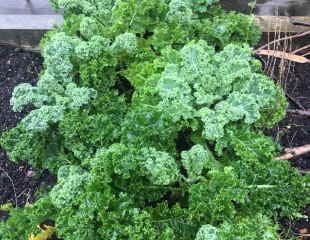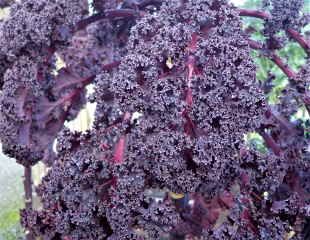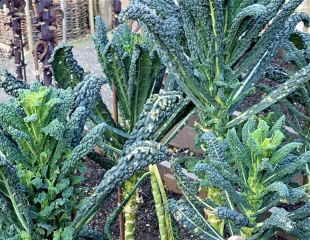


How to Grow Kale
Kale is one of the new "super foods". It contains high levels of minerals and vitamins, namely Vitamins A,C,K and high levels of Vitamin B6, calcium, thiamine, folate, and iron.
What is equally surprising is that Kale is very easy to grow.
It is a member of the Brassica family, which is not considered the easiest vegetables to grow. Cabbage needs to be netted to avoid the pigeons and caterpillars. Brussel sprouts need a long growing season, and the sprouts can be blown, which is loose leaved making for a poor crop. Cauliflowers can fail to live up to expectations, but not Kale.
Kale is the easy member of the Brassica family to grow. I have plenty of pigeons and caterpillars in my garden but they leave the Kale alone and I do not net it.
Harvest Kale as baby leaves, in around July, just a few leaves at anyone time; and then, throughout autumn into late winter. Kale is hardy to -15, and will withstand cold and frost, especially the purple varieties.
Growing Kale from Seed
Kale is easy to germinate, which makes it cheap to grow from seed.
Kale is best started under glass around April/May into modules, or direct outside around late May/June when there is enough warmth to germinate the seed. After about 6/8 weeks, the seedlings should be large enough to plant out. Kale plants get quite large depending on the variety which you need to remember when planting the seedlings out in around July/August/
Alternatively, you can buy small plants and plant directly into the veg plot around late June/July.
As with all small plants, keep watered until established.
How to plant and grow Kale
Conventional garden wisdom advises that to plant kale well spaced out, around 45cms, but that tended to be when the very large varieties of Kale were popular. Modern garden plots do not really accommodate the large varieties of Kale. Should you decide to grow, say Redbor, which grows up to 90cms, you will need a lot of space, but there are many smaller varieties which are more practical to grow.
Illustrated top left from my own vegetable plot is "Dwarf Green Curled, " which is a smaller variety which I plant closer around 25cms. You can pick some tender leaves early in the season and keep picking. Kale will carry on cropping well into the winter. By picking the leaves regularly, you can harvest the softer leaves. To my taste, this variety of Kale is less bitter than some other varieties. I have also grown "Westland winter" described as a semi tall variety, introduced to me by listening to Chef Raymond Blanc, who recommends it and it is a delicious variety to grow.
The dwarf varieties of Kale are ideal to grow where space is in short supply, or you want to grow in containers, or you just do not want Kale to take over.
Kale will tolerate all soil types, although it may not do well on acidic soil. If your soil has a low PH, it may be better to grow Kale in containers using a peat free compost. Grow kale in fertile soil with the plants well firmed in. The taller varieties may need staking in exposed areas . Kale grows in full sun and tolerates partial shade and needs no attention once the seedlings are established.
Kale is pretty well pest free.
Kale can be harvested all winter and may even produce a late spurt of leaves in early spring.
last updated 09.03.2022
